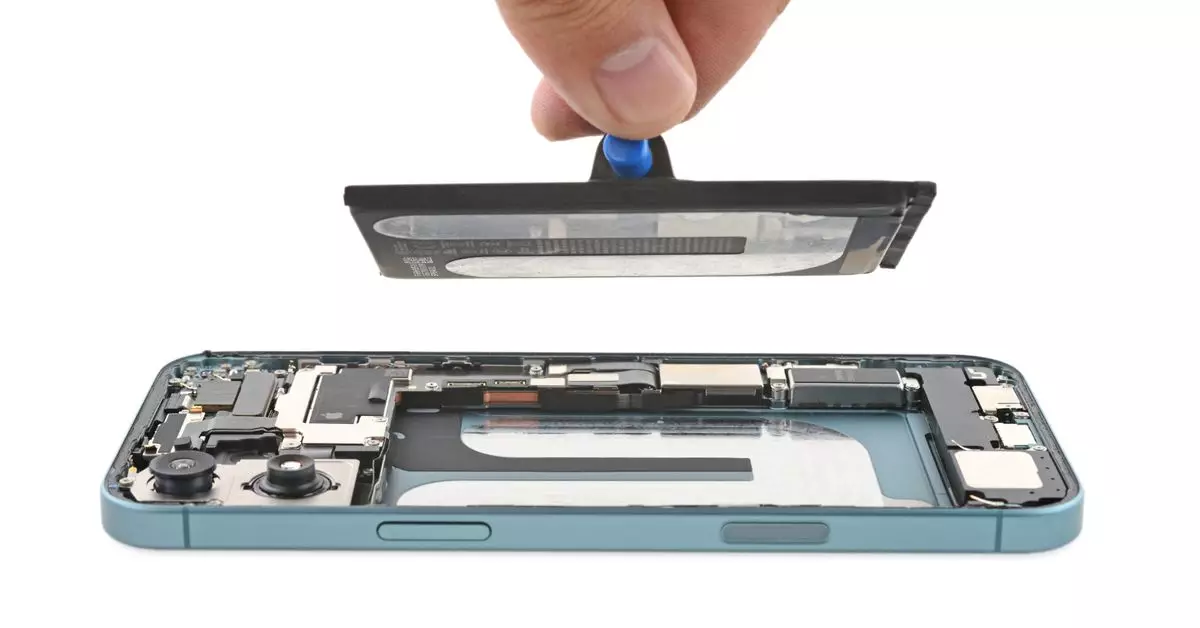With the recent launch of the iPhone 16 lineup, enthusiasts and tech analysts alike have had their eyes fixated not only on the new features but also on the device’s construction and repairability. iFixit, a company known for its systematic disassembly diagrams and repair guides, wasted no time in taking apart the latest offerings from Apple. This year, the focus has shifted towards the base model, which surprises many by incorporating significant advancements in repair technology that have implications for both consumers and the environment.
One of the standout observations from iFixit’s analysis was the inclusion of a physically moving Camera control button. This change reflects Apple’s commitment to enhancing user experience by providing tactile feedback, a feature many users appreciate. The engineers at Apple have also integrated a flexible cable, hinting at sophisticated engineering that likely enhances the responsiveness of the button. This innovation symbolizes a broader trend in the industry where companies are increasingly prioritizing mechanics that offer greater usability over purely aesthetic designs.
Another interesting aspect of the iPhone 16’s internals is the heat management system, particularly around the A18 chip’s Neural Engine. As artificial intelligence becomes integral to smartphone functions, efficient thermal management is paramount. The heat sinks in the iPhone 16 are thoughtfully positioned to adequately dissipate heat produced during computationally intense tasks. This engineering consideration not only enhances performance but also extends the device’s lifespan, as overheating components can lead to accelerated wear and tear.
Among the most groundbreaking advancements with the iPhone 16 is the utilization of electrically debondable adhesive for the battery casing. For years, the challenge of replacing phone batteries has involved tedious deconstruction, often leaving devices vulnerable to damage. However, Apple’s shift to this dynamic adhesive demonstrates a progressive approach to repairability. When applying an electrical current, the adhesive can safely release, allowing users or technicians to replace batteries with minimal effort. This innovation aligns perfectly with the increasing demand for sustainable practices, as it facilitates longer phone life cycles and easy repairs.
Overall, the iPhone 16 showcases significant advancements in both usability and repairability. Apple appears to be acknowledging the growing consumer demand for devices that are easier to repair, which could very well define the future of smartphone design. With features like a responsive Camera control button and a pioneering battery adhesive process, Apple is not only enhancing the user experience but also paving the way for a more environmentally friendly approach to technology. As we continue to witness the evolution in mobile technology, the implications of these changes are profound, suggesting a future where consumers are empowered to maintain their devices with ease.


Leave a Reply